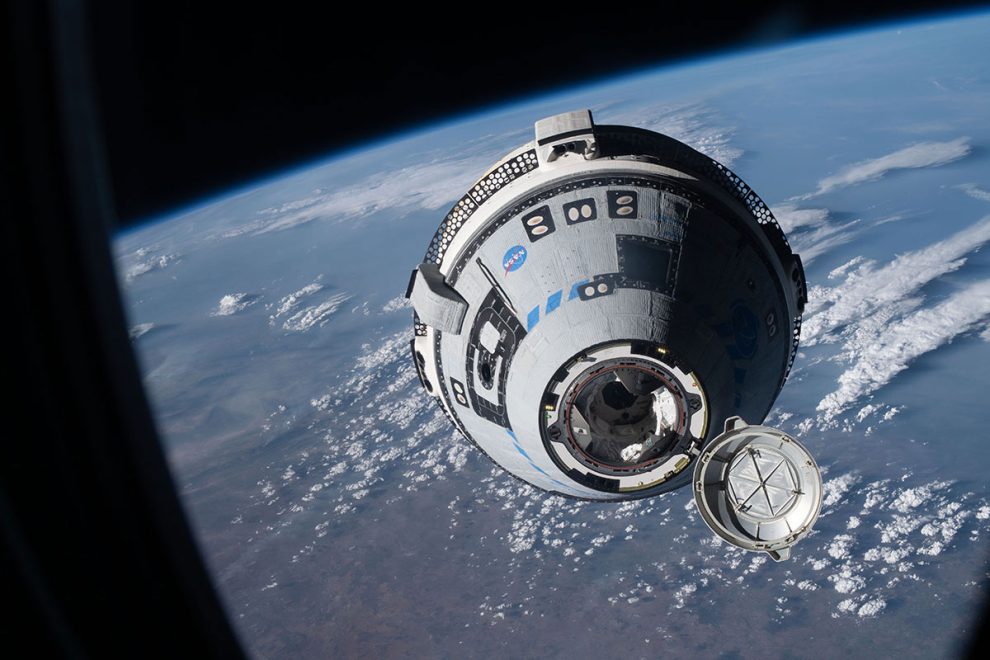Boeing Starliner spacecraft was an important project developed under NASA’s Commercial Crew Program and planned to carry American astronauts to the International Space Station (ISS). However, contrary to expectations, Boeing’s Starliner encountered a series of technical problems and setbacks, causing serious difficulties for both NASA and Boeing. The two astronauts, Sunita Williams and Butch Willmore, who were sent to space in their only manned attempt to reach the International Space Station, have been stranded on the ISS for about 3 months, and most recently, NASA announced in a press conference on August 24 that it plans to bring these two astronauts back with the SpaceX Spacecraft in February 2025. The fact that Boeing is not thought to be able to safely return the spacecraft with the astronauts and that NASA will return the astronauts to Earth with Boeing’s competitor SpaceX has dealt a serious blow to the giant company in terms of prestige. Within this framework, it is planned to return the Starliner spacecraft, which is currently on the ISS, to Earth unmanned.
The Starliner Project Was Going Wrong From the Start
The first serious challenge Starliner faced was software issues during its first unmanned test flight, OFT-1, in 2019. Starliner failed to dock successfully with the ISS and had to return to Earth as planned. Investigations following the incident revealed that a bug in the timing system had incorrectly set the main timer on the vehicle, resulting in a large portion of the fuel being consumed at the wrong time. This type of software error posed a serious safety risk and exposed weaknesses in Boeing’s engineering processes. The software issues were not limited to OFT-1. During the OFT-2 mission in 2021, the launch was aborted due to problems with the thruster system valves in the Starliner’s service module. The problem was that the oxidant valves were not opening, preventing the vehicle from providing sufficient thrust. This situation revealed deficiencies in Boeing’s hardware design, as well as problems in its quality control processes. In particular, it is clear that more comprehensive testing and simulation processes are needed to ensure the reliability of such critical components.
Administrative Problems Plague Boeing while Struggling with Aircraft Problems
In addition to technical problems, administrative and organizational deficiencies in Boeing’s Starliner project are also among the main reasons for the failures. Boeing was also conducting the Starliner project while dealing with the crisis in the 737 MAX aircraft. This situation caused a division of resources and attention, and as a result, quality and safety standards were compromised in both the aircraft and spacecraft programs. It is likely that deficiencies in Boeing’s internal organizational structure and communication problems are a significant reason for the setbacks experienced in the Starliner project. Most likely, there was insufficient information sharing among the engineers and managers involved in the project, and the problems were not addressed in a timely and effective manner. Such organizational weakness increases the risk of failure in complex and high-risk projects. In addition, the management team’s failure to pay enough attention to the feedback of the technical team led to the repetition of errors and the deepening of the problems. Boeing, which is already struggling with the problems of the 737 Max and 777X in the aircraft segment and has lost prestige all over the world, has a serious trust problem and loss of prestige, and the fact that this problem also occurs in the Starliner project and the astronauts will be brought to the world by the rival company SpaceX.
Effects and Losses on Boeing
Boeing’s failures in the Starliner program have become more apparent compared to the successes of its competitors such as SpaceX. SpaceX successfully carried astronauts to the ISS under NASA’s Commercial Crew Program with its Crew Dragon spacecraft. This weakened Boeing’s competitiveness in the space industry and damaged the company’s reputation. SpaceX’s success was further highlighted by Boeing’s failures and reduced public trust in Boeing. Boeing’s failures in the space program also negatively affected the company’s overall reputation. Following the 737 MAX crisis in the commercial aircraft sector, the setbacks in the Starliner project increased concerns about Boeing’s overall engineering and management quality. This situation damages Boeing’s credibility in the eyes of both commercial and government customers.
In addition, the delays and failures in the Starliner program have placed serious financial burdens on Boeing. The disruptions in the program have caused Boeing to delay its contracts with NASA and therefore not receive the expected payments. In addition, the costs of the redesign and testing processes have also added additional burdens to the company’s budget. The financial losses Boeing experienced in this project have negatively affected the company’s overall profitability and are causing concern among shareholders. Moreover, it is unclear whether NASA will continue to cooperate with Boeing after the failure of Starliner. In addition to the financial impacts, the failures in Starliner may also reduce Boeing’s willingness to invest in future space projects.
So Can Boeing Get Out of This Spiral?
In order for Boeing to compensate for its failures in the Starliner project and regain its reputation in the space industry, it needs to take a number of important steps. Boeing, which recently changed its CEO, must first determine the root causes of the technical problems and conduct a more comprehensive review to solve these problems. An independent audit process can be initiated to fix errors in software and hardware components and should receive support from external experts. In addition, Boeing needs to review its management and organizational structure. By adopting a more transparent and effective approach in project management and communication processes, a management culture that takes into account the feedback of engineers and technical personnel should be created and intra-project communication channels should be strengthened. In addition, Boeing’s establishment of a special crisis management team for space programs can ensure that potential problems are addressed quickly and effectively. Most importantly, it is of great importance for Boeing to improve its quality control and testing processes. In high-risk projects such as Starliner, the reliability of each component should be tested meticulously. By conducting more simulations and prototype tests, potential errors can be detected and eliminated in advance. In addition, stricter standards should be determined for supply chain management and component quality.
What’s Next After Beoing Starliner?
After this result, which also dealt a blow to the aerospace sector, it is vital for Boeing to learn from its mistakes in this project and make the necessary improvements in order for both the company and America to maintain its leadership in space exploration. If Boeing can bring back the quality and care of its early years in both the space and aircraft segments, it can return to its old days; otherwise, it will lose its leadership in the aircraft industry to Airbus and its presence in space to SpaceX, which is already the leader. Of course, on the one hand, these problems for Boeing are a serious opportunity for other companies to invest in the aircraft and space sector and to expand upon them.




































Wonderful resource sir